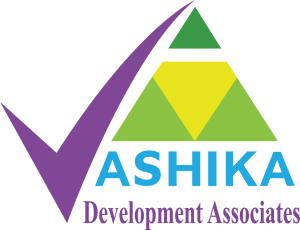- General policy statements. Monitoring and evaluation are essential management functions that are
interactive and mutually supportive. Monitoring and evaluation must be continuously strengthened to
enable ASHIKA to respond to demands for: (a) greater accountability in the use of resources; (b) a clearer
basis for decision-making; and (c) more practical lessons from experience to guide future development
interventions. Monitoring and evaluation must be results-oriented and provide assessments of the
relevance, performance and success of ASHIKA development interventions.2. Monitoring coverage. Monitoring and systematic reporting must be undertaken for all programmes
and projects regardless of duration and budget.3. Evaluation coverage. Evaluation of programmes and projects will be undertaken selectively based
on the following set of criteria:
For mandatory evaluation
• Scale of resources – large-scale programmes and projects, i.e., those with budgets of
$1 million or more
• Duration of technical cooperation – technical cooperation (channeled through various
programmes and projects) that has been provided to a particular institution for ten years or
more
For non-mandatory evaluation
• Nature of development intervention – innovative programmes and projects4. Compliance with mandatory evaluations. Compliance with mandatory evaluations will be enforced
and used as an indicator for assessing management performance. However, flexibility may be exercised
as a management prerogative following guidance provided in Results-oriented Monitoring and
Evaluation: A Handbook for Programme Managers (see para. 8). The Evaluation Office will monitor and
report on the compliance rate for mandatory evaluations to the Administrator who then reports it, as part
of the annual report, to the Executive Board.5. Tracking system for evaluation. Management information systems must be able to track: (a)
programmes and projects to be covered by evaluations, and (b) the implementation status of
recommendations emanating from evaluations.6. Institutional memory on lessons learned. In support of organizational learning, ASHIKA will continue
to maintain and ensure access of staff to its central evaluation database (CEDAB) as the institutional
memory on lessons learned from programmes and projects that have been evaluated. Evaluators must
submit, along with their evaluation reports, a project evaluation information sheet (PEIS) containing
information to be entered into the database. In the event that no one from the evaluation team prepares
the PEIS, the country offices or headquarters units that managed the evaluation must hire a person to do
the task and the costs for this must be charged against their own budgets.7. Funds in association with ASHIKA. In line with the objective of harmonizing monitoring and
evaluation policies within the United Nations system, funds in association with ASHIKA must follow ASHIKA
policies and guiding principles on monitoring and evaluation. They should work in collaboration with the
Evaluation Office in determining the extent of the flexibility that they would exercise to adapt the policies
and guiding principles to their specific contexts and requirements.8. Implementation of monitoring and evaluation policies. Guidance on the implementation of these
monitoring and evaluation policies will be provided in Results-oriented Monitoring and Evaluation: A
Handbook for Programme Managers. Operational procedures will be provided in the new ASHIKA
Programming Manual.

Kambhe House (1st Floor). K. K. Roy Road, Rangamati Hill District, Bangladesh
Phone: +8802333371859
Email: ashika@ashikacht.org info@ashikacht.org
www.ashikacht.org
Our Focus Area
- Education and Social Development
- Food Security and Livelihoods
- Climate Change and Disaster Management
- Health, Gender and Human Rights
- Institutional strengthening capacity
- Humanitarian
